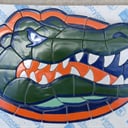The height of a horse is given in hands, as measured from the ground to which point on its anatomy?
From the ground to the horse’s withers (the ridge between the shoulders and the highest point above the horse’s shoulder that doesn’t move) is the standard method of measurement of a horse's height in many parts of the world.
The hand measurement is used in the U.S., Canada, Ireland and the UK. In other parts of the world, including continental Europe, and in FEI-regulated international competition, horses are measured in metric units, usually metres or centimetres (FEI - The International Federation for Equestrian Sports (French: 'Fédération Équestre Internationale') is the international governing body of equestrian sports). In South Africa, measurements may be given in both hands and centimetres, while in Australia, the equestrian regulations stipulate that both measurements are to be given.
A hand is four inches, and a horse that is sixteen hands and two inches will be described as “16.2hh.” A four-inch hand, unsurprisingly, is roughly the breadth of a man’s hands, with or without the thumb, a unit of length which can be traced to the ancient Egyptians. The palm or hand shows up in texts from Ancient Israel, Greece, and Rome, and continued to be used throughout Europe during the Middle Ages but varied from city to city. Henry VIII standardised the hand to four inches in 1541.
No one really knows why some places stuck with the antiquated measurement system (though it’s notable that the countries still using hands were colonised by Britain).
More Info:
en.wikipedia.org









